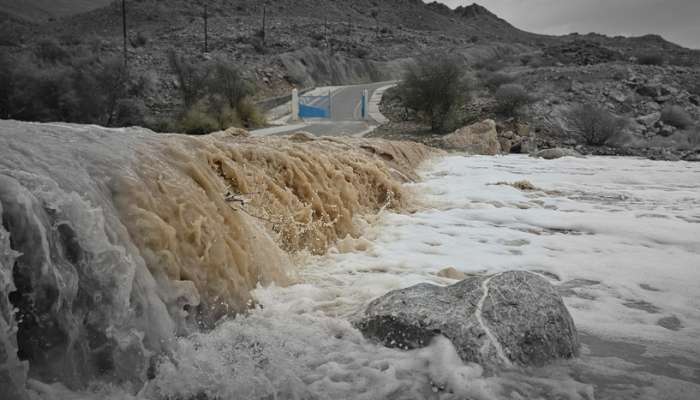Several wilayats in different governorates in Oman experienced light to medium rainfalls on Monday, leading to the flow of wadis. The Wilayat of Nizwa in Al Dakhiliyah Governorate saw rainfall in villages such as Wadi Al Musalla, Wadi Kummah, and Al Rahba. In the Wilayat of Nakhal in South Al Batinah Governorate, rain fell on mountains and in the center of the wilayat, causing wadis to flow in some areas. Rustaq witnessed rainfall in villages like Wadi Bani Awf, Wadi Al Sahtan, and Wadi Bani Ghafir, as well as in the Niyabat of Al Hawqayn.
In Al Awabi, rain was concentrated on mountain peaks and villages in the wilayat’s center, resulting in the flow of wadis like Wadi Bani Kharous, Wadi Safoun, and Wadi Al Sahtan. Additionally, wadis such as Wadi Bani Henai, Al Hawqayn, and Wadi Bani Ghafir experienced increased flow due to the rainfall. It is important to note that the rainfalls were not heavy, but were sufficient to cause wadis to flow in the affected areas. Residents are advised to exercise caution and stay alert during such weather conditions.
The rainfalls in these wilayats come as a relief to residents and farmers, as the country relies heavily on agriculture and water resources for its economy. The flow of wadis is essential for replenishing groundwater and sustaining agriculture in the region. Oman, like many other countries in the region, experiences limited rainfall throughout the year, making any rainfall a welcome sight for the local population. The rains are also important for sustaining the ecosystem and biodiversity of the region.
The government of Oman has been working to improve water management and conservation practices in the country to ensure sustainable use of water resources. Initiatives such as cloud seeding and building dams and reservoirs have been implemented to increase water availability for agriculture and other purposes. The recent rainfalls in various wilayats serve as a reminder of the importance of these efforts and the need to continue working towards water security for the country.
As climate change continues to affect weather patterns worldwide, it is crucial for countries like Oman to adapt and prepare for more extreme weather events, including heavy rainfalls and droughts. By investing in water management and conservation strategies, Oman can better cope with these challenges and ensure a sustainable future for its population. The recent rainfalls in the wilayats highlight the importance of water as a vital resource for the country’s development and well-being.





















